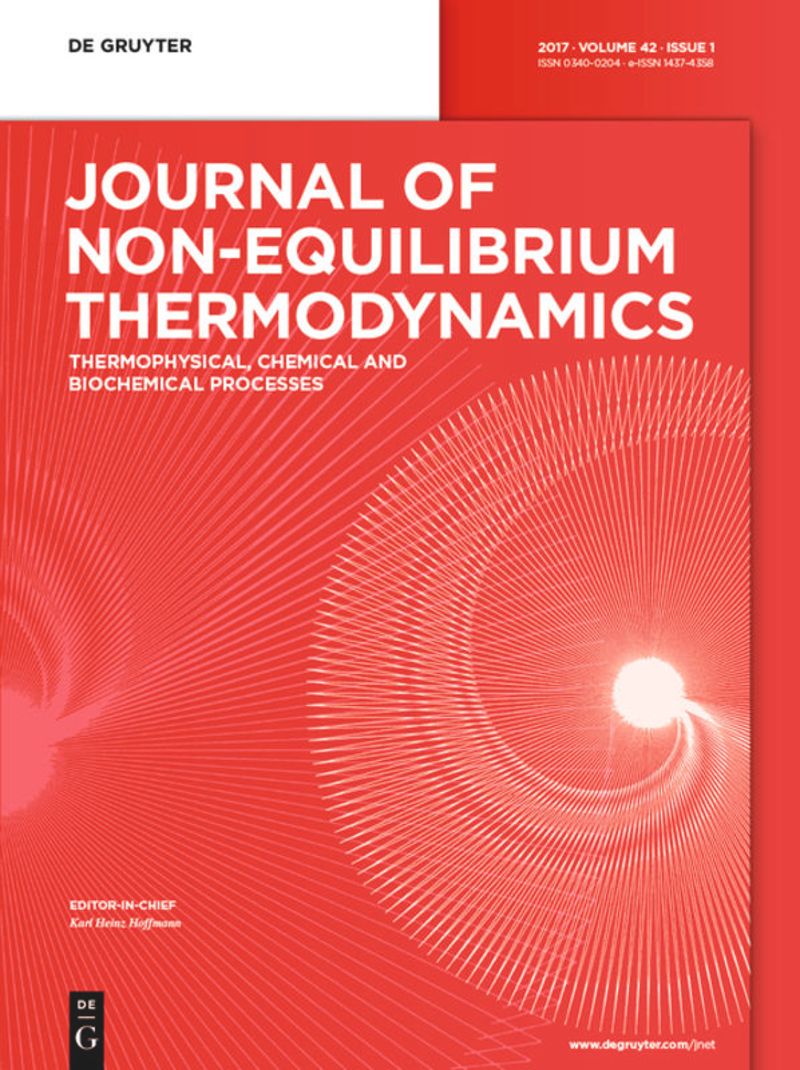分数扩散的熵产悖论
IF 4.2
3区 工程技术
Q1 MECHANICS
引用次数: 0
摘要
色散扩散和波的传播似乎是不相连的、根本不同的演化方程。然而,在异常扩散的背景下,已经提出了基于分数扩散方程的建模方法,该方法允许在两种状态之间建立连续的桥梁。从不可逆色散扩散到可逆波传播的转变显示出熵产生的意外增加。回顾了分数扩散的这种看似矛盾的行为,并将其与基于树的扩散模型的行为进行了比较。本文章由计算机程序翻译,如有差异,请以英文原文为准。
The entropy production paradox for fractional diffusion
Abstract Dispersive diffusion and wave propagation seem to be unconnected and fundamentally different evolution equations. In the context of anomalous diffusion however modeling approaches based on fractional diffusion equations have been presented, which allow to build a continuous bridge between the two regimes. The transition from irreversible dispersive diffusion to reversible wave propagation shows an unexpected increase in entropy production. This seemingly paradoxical behavior of fractional diffusion is reviewed and compared to the behavior of a tree-based diffusion model.
求助全文
通过发布文献求助,成功后即可免费获取论文全文。
去求助
来源期刊
CiteScore
9.10
自引率
18.20%
发文量
31
审稿时长
1 months
期刊介绍:
The Journal of Non-Equilibrium Thermodynamics serves as an international publication organ for new ideas, insights and results on non-equilibrium phenomena in science, engineering and related natural systems. The central aim of the journal is to provide a bridge between science and engineering and to promote scientific exchange on a) newly observed non-equilibrium phenomena, b) analytic or numeric modeling for their interpretation, c) vanguard methods to describe non-equilibrium phenomena.
Contributions should – among others – present novel approaches to analyzing, modeling and optimizing processes of engineering relevance such as transport processes of mass, momentum and energy, separation of fluid phases, reproduction of living cells, or energy conversion. The journal is particularly interested in contributions which add to the basic understanding of non-equilibrium phenomena in science and engineering, with systems of interest ranging from the macro- to the nano-level.
The Journal of Non-Equilibrium Thermodynamics has recently expanded its scope to place new emphasis on theoretical and experimental investigations of non-equilibrium phenomena in thermophysical, chemical, biochemical and abstract model systems of engineering relevance. We are therefore pleased to invite submissions which present newly observed non-equilibrium phenomena, analytic or fuzzy models for their interpretation, or new methods for their description.

 求助内容:
求助内容: 应助结果提醒方式:
应助结果提醒方式:


